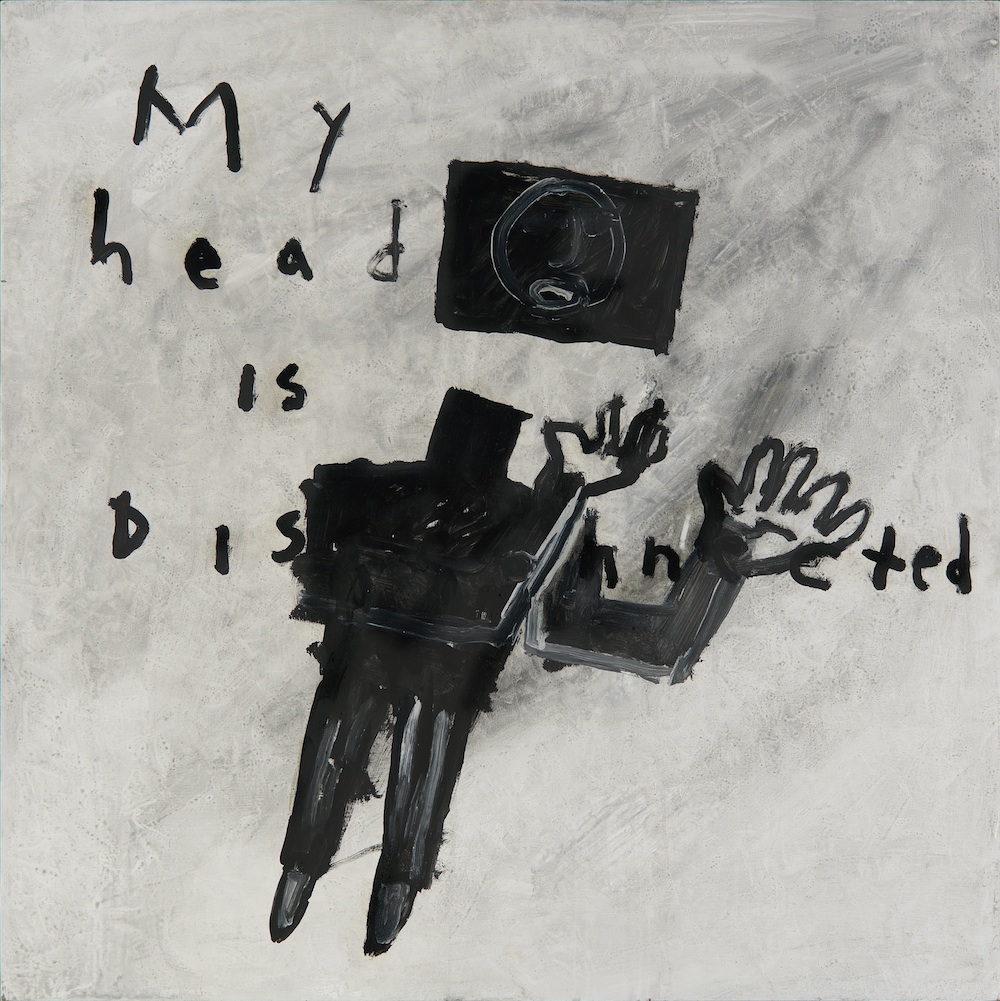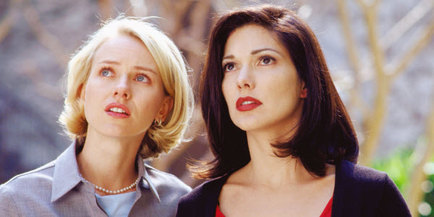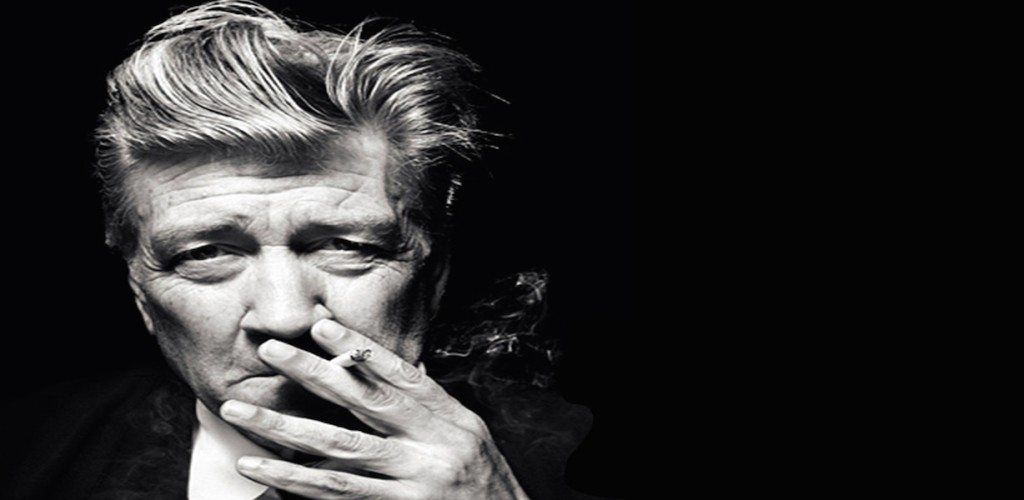What is cinema? For me, just like most people, it used to be a source of entertainment. A means to kill time, and have some fun along the way. Until recently, I never comprehended cinema as an art form – like music, prose or poetry. I always believed it to be a combination of a variety of artistic forms, with the director being just someone who stitches it all together. Never did I consider the craft that goes into film-making. Now, looking back, I realize how stupid and ignorant I have been. But, I don’t think it is just me alone. Popular cinema has always been an entertainment bandwagon. Even great cinematic triumphs were designed to fit into a certain template – a narrative fantasy where there is a beginning and an end, where everything makes sense.
Perhaps the fact that he was a painter long before he forayed into film-making helped David Lynch steer clear of this conventional film milieu. You see, unlike cinema, paintings never really give you any answers. There is a mystical quality to them, where there are multiple answers, and no one explanation is right or wrong. Would the Mona Lisa be the great painting that it turned out to be, had da Vinci explicitly explained it? The great impressionist painter Edgar Degas once said, “Art is not what you see, it is what you make others see”. It is this artistic philosophy that Lynch brings to his film-making, where his films are all what we make of them.

David Lynch is a weird man, so much so that he could easily fit in among the characters in his movies. He believes that the primary objective of cinema, or art in general, is to evoke a response. It could even be hatred or contempt, it doesn’t matter. He only considers his work a failure if it is ignored, if it doesn’t merit a reaction, if it is ordinary ! Fortunately, that has never been the case. Right from his début with the eerie body horror classic ‘Eraserhead’, Lynch has constantly redefined the craft of cinema, while dismantling the conventional order of narrative structure. With weird characters, gory imagery, an uncanny humor and a slew of symbolism, he shocks and horrifies his audiences, who are treated with an experience unlike anything they ever had before. His fascination with dream logic and the idea of surreal imagery has often made his critics label his movies to be a disjointed collage of grotesque images. But is that all there is to it? Is he just a depraved soul, whose imaginative manifestations are taken a little too seriously ? Honestly, it doesn’t matter !

The fact that most of his movies tread on the edge of reality leads many people to speculate that his movies are the derived from his dreams. Actually, it is quite the contrary. All of Lynch’s works are wrapped around a simple premise, “an idea”, as he calls it. The idea could be anything, from a character, a sequence or an emotion; which slowly matures into a concept. But unlike conventional filmmakers, a lot of his films do not have a structural narrative. Take, for example, his debut ‘Eraserhead’; the film deals with a man’s fears of parenthood and the idea of raising a child in the post-modern industrial world. But, in conveying this idea, the movie plays out like a nightmare, where characters pop in and out, doing things one would never expect them to do. There is a lot of symbolism, some you may discern and some remain a mystery. You may find it overwhelming at times, but in trademark Lynch style, it never fails to fascinate.
At first glance, it may appear that all of Lynch’s films are conceived and shot similarly. Yes, he plays around with a lot of similar themes, and he constantly pushes the envelope; but some go deeper than others. His last feature, ‘Inland Empire’, which is probably his least discernible film, was shot without a complete script, with him writing the scenes along with the shooting! And the result is a three-hour kaleidoscope of surreal images, spanning continents and timelines, with the central theme that of “a woman in trouble”. While his often revisited themes like Hollywood and sexploitation are also explored, a lot of it is pure visual poetry. And though it doesn’t make much sense, it is so bizarrely fascinating that you can’t look away. It is in this weird enchantment that Lynch’s magic lies.

A wise man once said that the key to a good screenplay is humor. Without humor in your narrative, the story could easily turn bland. And David Lynch is probably one of the most hilarious filmmakers around. But even his humor is unconventional. His comedy lies in the dichotomy between his characterizations and his narrative, his campy dialogues and his parodic storytelling. It is often the humor that he puts in some intense sequences that make them all the more effective. A very potent example would be his 1990 Palm d’Or winning feature ‘Wild at Heart’. In the first few minutes of this weird, quirky road saga, our hero Sailor, violently pounds to death a man who was hired to kill him, at a party, in front of horrified people. The way the sequence is overplayed is so hilarious, you will start laughing! It is this depravity of people managing to find humor over a violent murder that Lynch brings to the fore with his humor.
German songwriter/rocker Laura Corbane recently claimed that no film-maker has used sound and music as David Lynch has. It is probably true. One of the most important aspects of a Lynch film is its soundtrack and background score. It complements the bizarre imagery on the screen while effectively conveying the tone and tenor of the film. The film world was entranced by the weird sounds that played out in the head of Henry Spencer in ‘Eraserhead’. It was bizarre and unorthodox, yet truly magical. And even in his subsequent features, his deft weaving of music into the narrative is an absolute marvel. With his frequent compatriot Angelo Badalameti, he has always used music to give his movies a 1950s retro feel, most notably in ‘Blue Velvet’ and ‘Mulholland Drive’. Who can forget the terrifying scene where the sadistic Frank Booth (Dennis Hopkins) viciously beats up Jeffrey (Kyle MacLachlan) as he is dancing to Bobby Vinton’s In Dreams or the emotionally heart-wrenching rendition Llorando at the Club Silencio sequence in ‘Mulholland Drive’? But the one place where music completely transcended the narrative for Lynch would be his cult TV drama ‘Twin Peaks’. Arguably the best soundtrack for a TV Series ever, ‘Twin Peaks’ took the ethereal dream-like quality of Badalamenti’s music to the next level. The music, especially the theme song, has the power to captivate you and transport you to the world Lynch created.
John Hurt plays John Merrick, a deformed man in the period drama ‘The Elephant Man’ (1980)It might take ages even to list some of the iconic characters that David Lynch brought to life with his work. From John Merrick (John Hurt) in ‘The Elephant Man’ to the Mystery Man (Robert Blake) in ‘Lost Highway’, his quirky characters include everything from The Log Lady to The Man From Another Place. He also seems to possess an uncanny ability to bring the best out of his actors. From Isabella Rossellini in ‘Blue Velvet’, Richard Farnsworth in ‘The Straight Story’, and most notably Naomi Watts in ‘Mulholland Drive’; he has been able to draw out fine performances.
The greatest mystery surrounding David Lynch might be about his work; what does it all mean? Is there a method behind the madness? While a some of his themes and influences are fairly obvious, others are virtually impossible to discern, at least to me. One interesting fact that you notice in Lynchian films is how contemporary and relevant his themes are, despite a lot of them being surreal and dream-like. ‘Eraserhead’ happened just around the time Lynch’s girlfriend was pregnant with his child, and had to marry her; it is quite possible that the idea of portraying the horrors of raising a child in a dystopian, industrial society might have come from personal experiences.
Another theme that Lynch has tried to explore is the gulf between the façade of small town idealism and the murky underbelly that lurks beneath. It forms the crux of the narrative both in ‘Blue Velvet’ and ‘Twin Peaks’, where beneath all the guise of small town innocence and happiness, there is a dark seedy world beyond the surface. In movies like ‘Mulholland Drive’ and ‘Inland Empire’, he expands this idea to Hollywood, where he shows the dark side of the film industry, and how it transforms the people involved. Also, his characters often bridge the divide between good and bad, and people are often different from what they are initially perceived to be.
 His portrayal of women is something that has always fascinated me. Most of his movies are centered around a woman in trouble. In ‘Blue Velvet’, it was Dorothy, who was held emotionally captive by a sadomasochist; In ‘Twin Peaks’, it is Laura Palmer who is in trouble and though she is dead right from the beginning, her life and her loss of innocence is an important part of the narrative; in ‘Wild At Heart’, it is Lula who wants to get away from her obsessive mother; in ‘Lost Highway’, a troubled femme fatale is in the center stage; ‘Mulholland Drive’ is a story of two women (or one!) in Hollywood; and ‘Inland Empire’, as advertised, is about “a woman in trouble”. The influence behind such female characters is a mystery and though being a feminist, I sense a strong machismo attitude in some of them, Lynch’s characterizations are so strong that I was emotionally invested
His portrayal of women is something that has always fascinated me. Most of his movies are centered around a woman in trouble. In ‘Blue Velvet’, it was Dorothy, who was held emotionally captive by a sadomasochist; In ‘Twin Peaks’, it is Laura Palmer who is in trouble and though she is dead right from the beginning, her life and her loss of innocence is an important part of the narrative; in ‘Wild At Heart’, it is Lula who wants to get away from her obsessive mother; in ‘Lost Highway’, a troubled femme fatale is in the center stage; ‘Mulholland Drive’ is a story of two women (or one!) in Hollywood; and ‘Inland Empire’, as advertised, is about “a woman in trouble”. The influence behind such female characters is a mystery and though being a feminist, I sense a strong machismo attitude in some of them, Lynch’s characterizations are so strong that I was emotionally invested and lost all inhibitions.
and lost all inhibitions.
No great auteur is without flaws or critiques. Lynch is no different. While a lot of his admirers feel that his style and humor are traits of his impeccable grasp over the craft, many feel his movies are “an offense to narrative structure”. His parodical humor and campy dialogues have been widely panned for not taking the subject matter seriously, most notably by Roger Ebert, who incidentally felt that ‘Blue Velvet’ used cheap tricks to denigrate the movie’s serious subject matter and accused Lynch of misogyny. Another noted critic Dan Schneider has called him “an average director, making average movies”. A more serious critical assessment of Lynch’s work is that, while he has successfully redefined the formulaic structure of cinema, in turn, he also has created another structure of his own; where all his films follow a similar template of deliberate ambiguity. Though true to an extent, the ambiguity is not what lends authenticity to his movies. It has to do with a lot of facets, right from his themes to his treatment. Moreover, Lynch has not restricted himself to surreal cinema, making some fine movies with conventional stories like ‘The Straight Story’ and ‘The Elephant Man’, which reveals his versatility as a filmmaker.
While this whole exercise was attempt to look beyond the David Lynch as we know him, to try and understand him and his work, I believe we have only managed to scratch the surface. Such is the enigma of the man. It is a tad bit sad that while we revere a lot of other great auteurs like Steven Spielberg or Martin Scorsese, Lynch is often left in the side-lines. Despite a successful career spanning three decades, he hasn’t received an Academy Award. But then, one can take solace in the fact that even Orson Welles and Stanley Kubrick never received the acclaim they deserved during their prime; so there is still hope that the world recognizes him for the genius he is.
Even though surrealist cinema was explored long before by auteurs like Federico Fellini and Luis Buñuel, nobody did it with the flair and ambition of David Lynch. The truth is: there is, and there always will be only one David Lynch ! Though today he is also a musician, a painter and a pioneer of transcendental meditation, it is for his cinema that we always be grateful for. His coming back to television for Twin Peaks revival is good news, and we can only hope that we’ll get to see one last glimpse of the Lynchian world.


You must be logged in to post a comment.